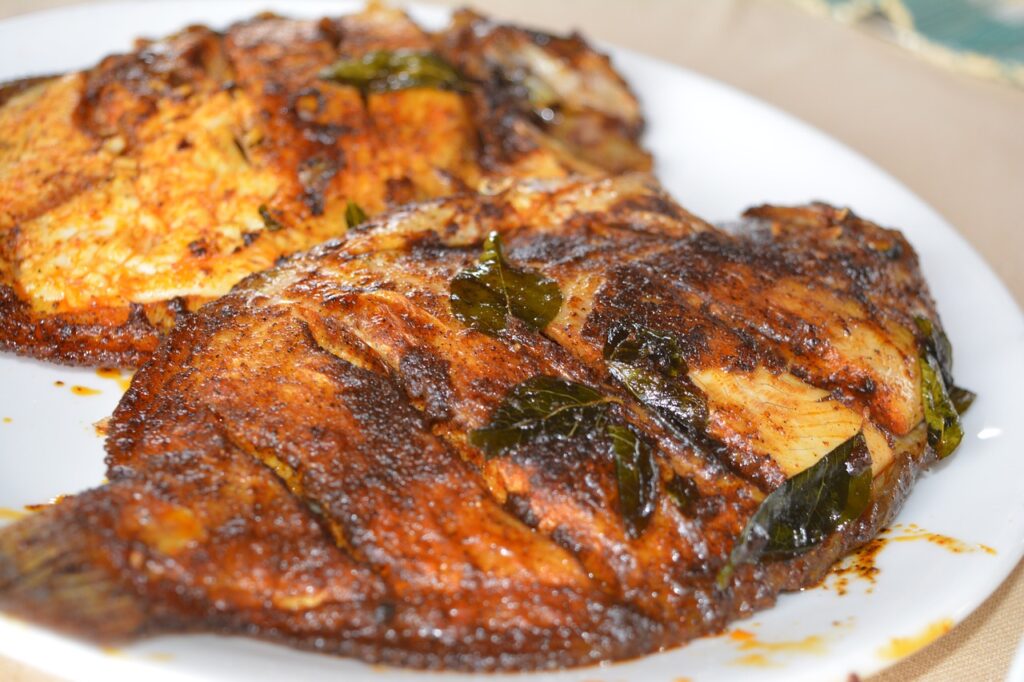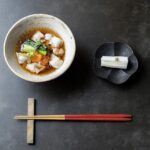Bangladesh, a gem in South Asia, offers an array of culinary delights that captivate food enthusiasts from around the globe. With a rich history and diverse cultural influences, Bangladeshi cuisine presents a tantalizing blend of flavors, textures, and aromas. This guide will take you on a gastronomic journey through the vibrant streets and rustic villages of Bangladesh, highlighting the must-try dishes, regional specialties, and unique dining experiences that make this country a food lover’s paradise.
The Essence of Bangladeshi Cuisine
Bangladeshi cuisine is characterized by its bold flavors and extensive use of spices. The cuisine is deeply rooted in tradition and draws heavily from regional ingredients, making it both diverse and unique. Rice and fish form the staple diet, often accompanied by a variety of lentils, vegetables, and an array of chutneys and pickles. The use of mustard oil and fresh herbs like coriander and mint adds a distinctive taste to many dishes.
Rice: The Heart of Every Meal
Rice is an integral part of Bangladeshi meals, often serving as the base for various dishes. Biryani, a fragrant rice dish cooked with meat, spices, and yogurt, is a favorite across the country. Variants like Chicken Biryani, Beef Biryani, and Mutton Biryani are savored for their rich, aromatic flavors. Another popular rice dish is Pulao, which is lighter and often enjoyed with curries.
Fish: The Pride of Bengal
Bangladesh, with its extensive river systems and proximity to the Bay of Bengal, boasts an abundant supply of fish. Hilsa, the national fish, is a delicacy that is prepared in numerous ways, including frying, steaming, and cooking in mustard gravy. Other popular fish dishes include Rui Maach (Rohu fish), Chingri Malai Curry (Prawn in coconut milk), and Fish Bhuna (spicy fish curry).
Meat Dishes: A Carnivore’s Delight
Meat lovers will find themselves in heaven with the variety of meat dishes available in Bangladesh. Kacchi Biryani, a traditional dish made with marinated mutton, rice, and potatoes, is a must-try. Beef Bhuna, a slow-cooked spicy beef curry, and Chicken Korma, a creamy and aromatic chicken curry, are other delectable options. The street food favorite, Shami Kebab, made from minced meat and lentils, is perfect for those on the go.
Regional Specialties: A Culinary Tour of Bangladesh
Dhaka: The Capital’s Culinary Treasures
Dhaka, the bustling capital of Bangladesh, is a melting pot of flavors. The city’s food scene is vibrant and diverse, with street food being a major highlight. Fuchka (pani puri), Chotpoti (spicy chickpea and potato mix), and Jhalmuri (spicy puffed rice) are some of the must-try street foods. For a more substantial meal, try Morog Polao, a flavorful chicken and rice dish, or Bhuna Khichuri, a comforting mix of rice, lentils, and meat.
Chittagong: Coastal Delights
Chittagong, located on the southeastern coast, is renowned for its seafood. The Chittagong-style Mezban beef, a spicy and succulent beef dish, is a local specialty often served at social gatherings. Another must-try is Shutki (dried fish), which is cooked with a variety of spices to create a unique and pungent flavor. The region’s proximity to the sea ensures that dishes like Chingri Bhorta (mashed shrimp) and Pomfret Bhuna are incredibly fresh and flavorful.
Sylhet: A Fusion of Flavors
Sylhet, in the northeast, offers a distinct culinary experience influenced by its rich cultural heritage. Panta Ilish, a traditional dish of fermented rice and fried Hilsa fish, is a must-try, especially during the Bengali New Year celebrations. Sylheti cuisine is also known for its diverse range of bhortas (mashed vegetables and fish) and its unique use of citrus fruits like Satkora, which adds a tangy flavor to meat and fish curries.
Rajshahi: The Land of Mangoes
Rajshahi, often referred to as the “Silk City,” is famous for its delicious mangoes. During the mango season, the local cuisine features a variety of dishes incorporating this sweet fruit. Am Doi (mango yogurt) and Am Bhorta (spicy mashed mango) are popular treats. Additionally, the region’s preference for freshwater fish like Katla and Rui is evident in dishes such as Machher Jhol (fish curry) and Machher Bhorta.
Traditional Snacks and Street Food
Savoring the Streets
Street food is an essential part of Bangladeshi culture, offering a quick, affordable, and tasty way to experience the local cuisine. The streets are lined with vendors selling an array of snacks that are sure to tantalize your taste buds.
Fuchka and Chotpoti: The Ultimate Street Snacks
Fuchka, known as Pani Puri in India, consists of crispy hollow puris filled with spicy tamarind water, chickpeas, and potatoes. Chotpoti, a similar dish, is made with chickpeas, potatoes, and eggs, served with tamarind sauce and green chilies. Both are extremely popular and are enjoyed by people of all ages.
Jhalmuri: The Spicy Snack
Jhalmuri, a mix of puffed rice, mustard oil, spices, peanuts, and chopped vegetables, is a favorite street snack that offers a burst of flavors and textures. It’s a perfect on-the-go treat that is both light and satisfying.
Samosas and Singaras: Deep-Fried Goodness
Samosas and Singaras are deep-fried pastries filled with spiced potatoes, peas, and sometimes meat. These snacks are perfect for a quick bite and are often enjoyed with a cup of tea.
Sweet Treats and Desserts
Mishti: The Sweet Tooth’s Delight
Bangladesh has a rich tradition of sweets, collectively known as Mishti. These sweets are often made from milk, sugar, and rice, and are a staple at celebrations and festivals.
Rasgulla and Sandesh: Milky Marvels
Rasgulla, spongy balls of chhena (curdled milk) soaked in sugar syrup, and Sandesh, a sweet made from chhena and sugar, are two of the most popular Bengali sweets. Both are known for their delicate texture and sweetness.
Roshogolla: A Syrupy Delight
Roshogolla, another beloved sweet, consists of soft, round balls of chhena soaked in light sugar syrup. It’s a must-try for anyone visiting Bangladesh.
Pitha: Traditional Rice Cakes
Pitha are traditional rice cakes that come in various forms, often filled with coconut, jaggery, or date palm syrup. They are particularly popular during winter and festivals like Nabanna, a harvest festival.
Unique Dining Experiences
Dining with a View: Rooftop Restaurants
In urban areas like Dhaka and Chittagong, rooftop restaurants offer a unique dining experience with stunning views of the cityscape. These establishments often serve a mix of traditional Bangladeshi cuisine and international dishes, providing a perfect setting for a memorable meal.
Boat Dining: A Floating Feast
Dining on a boat along the rivers of Bangladesh offers a serene and picturesque setting. Enjoy traditional Bangladeshi dishes while cruising on the Buriganga River in Dhaka or the Karnaphuli River in Chittagong. It’s an experience that combines delicious food with the natural beauty of Bangladesh’s waterways.
Village Feasts: Authentic and Rustic
For a truly authentic experience, participate in a village feast. These gatherings are often communal, with locals coming together to cook and share a meal. You’ll have the opportunity to try homemade dishes prepared with locally sourced ingredients, providing a genuine taste of rural Bangladeshi cuisine.
Culinary Festivals and Events
Pohela Boishakh: The Bengali New Year
Pohela Boishakh, the Bengali New Year, is celebrated with great enthusiasm and is a fantastic time to explore Bangladeshi cuisine. Traditional dishes like Panta Bhat (fermented rice), Ilish Bhaja (fried Hilsa fish), and various sweets are prepared and enjoyed by families and communities.
Nabanna: The Harvest Festival
Nabanna, the harvest festival, is another occasion to indulge in Bangladeshi culinary delights. Pitha, traditional rice cakes, play a central role during this festival, with varieties like Bhapa Pitha, Chitoi Pitha, and Patishapta being particularly popular.
Eid Celebrations: A Feast of Flavors
Eid al-Fitr and Eid al-Adha are major Islamic festivals celebrated in Bangladesh with grand feasts. During Eid, families prepare and share an array of dishes, including Biryani, Korma, Kebabs, and an assortment of sweets like Shemai (vermicelli pudding) and Zarda (sweet rice).
Practical Tips for Food Lovers
Navigating Street Food Safely
While street food is a highlight of Bangladeshi cuisine, it’s important to be cautious. Choose vendors that maintain good hygiene, and opt for freshly prepared items to minimize the risk of foodborne illnesses.
Respecting Local Customs
Bangladesh is a predominantly Muslim country, so it’s important to be mindful of local customs, especially regarding food. During the holy month of Ramadan, for instance, eating in public during daylight hours is not appropriate.
Embracing Spices
Bangl
adeshi cuisine is known for its bold use of spices. If you’re not accustomed to spicy food, start with milder dishes and gradually work your way up. Don’t hesitate to ask for recommendations or request less spicy versions of dishes if needed.
Conclusion: A Culinary Adventure Awaits
Bangladesh offers a rich and diverse culinary landscape that is sure to captivate any food lover. From the bustling streets of Dhaka to the serene villages along the countryside, the country’s cuisine reflects its vibrant culture and heritage. Whether you’re savoring a traditional feast during a festival, enjoying street food on the go, or dining with locals in a village, the flavors of Bangladesh will leave a lasting impression. So pack your bags and embark on a culinary adventure to explore the delightful and diverse food scene of Bangladesh.


